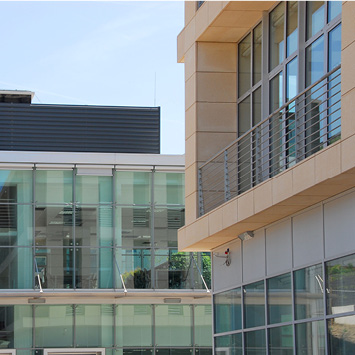
DISI Seminars on Wireless Networking and Localization
2024
Contact: prof. Paolo Casari paolo.casari@unitn.it

13 novembre 2024 ore 13:30 – 15:30, aula A110 a Povo 1 e online su Zoom
Next-Generation Wi-Fi: From IEEE 802.11be to 802.11bn and Beyond
in collegamento con Giovanni Geraci – Telefónica Scientific Research and UPF Barcelona
Abstract
What will Wi-Fi be in 2030? As hordes of data-hungry devices challenge its current capabilities, Wi-Fi strikes again, with the standardization of IEEE 802.11be just completed and that of IEEE 802.11bn kicking off. In this lecture, we will review how these brand-new amendments promise to revolutionize unlicensed wireless connectivity as we know it, unlocking access to gigabit, reliable, and low-latency communications.
14 novembre, 2024 ore 10:30 – 12:30, aula A222 a Povo 1
How to use wireless networks to sense the environment
con Francesca Meneghello – Università di Padova
Abstract
Why are researchers trying to integrate sensing functionalities within wireless networks? How can we monitor the environment using radio signals? In this seminar, we will answer these questions, deepening the principles behind the emerging wireless sensing applications andunderstanding their impact on communication networks.
Wireless networks are becoming the key to the digitalization of society. To give an idea, more than 80% of the Internet traffic is relayed by Wi-Fi with more than 21.1 billion Wi-Fi devices in use worldwide. Wireless devices continuously monitor the way signals are modified when propagating in the environment to properly precode and decode data, compensating for radio channel impairments. This operation is referred to as channel estimation and can be effectively leveraged to design sensing applications that extract information about the environment from multipath channel measurements. Signal processing, and machine and deep learning strategies are adopted for this purpose. Several communication-assisted applications have been proposed by the research community, ranging from human activity recognition, and gesture recognition, to person identification, and people tracking. Moreover, information about the environment can also be used to improve resource allocation in wireless networks (sensing-assisted communications). Given the potential of wireless sensing, the IEEE 802.11 standardization body is working toward standardizing such technology for Wi-Fi through the IEEE 802.11bf task group. This means that wireless sensing may be fully integrated within our Wi-Fi devices soon.
5 dicembre 2024 ore 10:30 – 12:30, aula A222 a Povo 1
Soft-information for localization and sensing
con Stefania Bartoletti – Università di Roma “Tor Vergata”
Abstract
Accurate localization and sensing are essential in modern context-aware applications. Traditional localization relies on deterministic single-value metrics, such as range and angle estimates, with simplified measurement models. However, these approaches often falter in challenging environments with noise, non-line-of-sight conditions, and complex propagation effects.
This seminar introduces the Soft Information (SI)-based approach for localization and sensing, a recent probabilistic framework that integrates data from diverse intra- and inter-node measurements, as well as contextual data, to enhance localization accuracy and robustness. By employing efficient methods for extracting, learning, and fusing SI, this approach outperforms classical techniques in accuracy with different levels of computational complexity. The SI framework represents a key advancement in AI-based localization and sensing, poised to support the next generation of resilient and efficient positioning technologies.
12 dicembre 2024 ore 10:30 – 12:30, aula A222 a Povo 1
GNSS: architecture and positioning principles (Part 1)
Con Luca Canzian – Qascom s.r.l.
Abstract
The seminar will teach the positioning principle of a Global Navigation Satellite System (GNSS). First, an introduction to GNSS will be provided, explaining the high-level architecture of a GNSS system and describing the main features of the different operational GNSS systems. The basic GNSS positioning principle will then be discussed, from the estimation of the pseudorange up to the position and velocity determination through a least square technique. Finally, the seminar will conclude explaining the Kalman Filter positioning technique and the integration of GNSS with inertial measurements.
18 dicembre 2024 ore 13:30 – 15:30, aula A110 a Povo 1
GNSS: architecture and positioning principles (Part 2)
Con Luca Canzian – Qascom s.r.l.
Abstract
The seminar will teach the positioning principle of a Global Navigation Satellite System (GNSS). First, an introduction to GNSS will be provided, explaining the high-level architecture of a GNSS system and describing the main features of the different operational GNSS systems. The basic GNSS positioning principle will then be discussed, from the estimation of the pseudorange up to the position and velocity determination through a least square technique. Finally, the seminar will conclude explaining the Kalman Filter positioning technique and the integration of GNSS with inertial measurements.